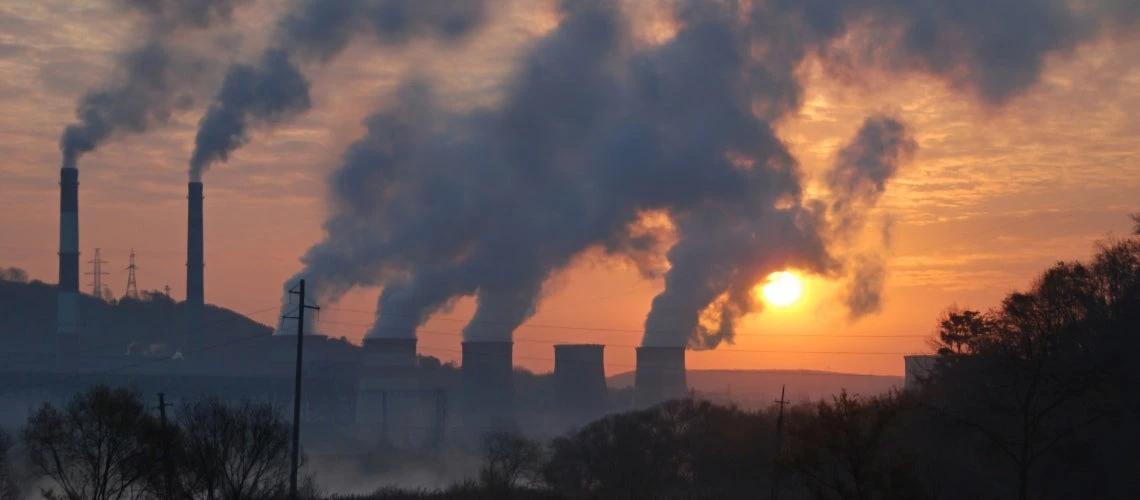 Most deaths from exposure to fine particulate matter occur in low- and middle-income countries where air pollution is the leading health risk. Copyright: Tatiana Grozetskaya/Shutterstock
Most deaths from exposure to fine particulate matter occur in low- and middle-income countries where air pollution is the leading health risk. Copyright: Tatiana Grozetskaya/Shutterstock
Currently, 94% of the world’s population is exposed to unsafe pollution levels. The global cost of health damages from exposure to polluted air was estimated to be $8.1 trillion in 2019, according to a World Bank report. The total is equivalent to 6.1 percent of the global gross product.
The toll on human life and health is also enormous. In 2019, prior to the COVID-19 pandemic, an estimated 6.4 million people worldwide died prematurely due to exposure to fine particulate matter, known as PM2.5. That makes air pollution the fourth leading cause of mortality worldwide.
PM2.5 particles are smaller than dust, pollen, or the width of a single strand of hair. Humans can see them only with the help of a microscope. Particles this small are easily inhaled, becoming deeply lodged in human lungs.
The unequal costs of pollution
The cost of pollution is not paid equally. Most deaths from PM2.5 exposure occur in low- and middle-income countries where air pollution is the leading health risk. The equity and distributional impact of increased disease caused by pollution limits opportunities for young children to attend school and for low-income individuals to become productive workers, which can keep people trapped in poverty and reduce productivity at the business and country levels.
Pollution hotspots in South and East Asia, the Middle East, and North Africa have PM2.5 levels eight to nine times higher than in North America. China and India account for just over half of all deaths from air pollution.
In polluted communities around the world, people are exposed to a host of health problems: from heart disease, stroke, and lung cancer to respiratory problems such as asthma, pneumonia, and chronic obstructive pulmonary disease. Exposure to polluted air also has been linked to preterm delivery, low birth weight, and neurological impairment.
An economic burden
Air pollution’s costs – from premature deaths, lost earnings, and increased healthcare expenditures – impose a heavy economic burden on low- and middle-income countries. In these countries, air pollution also poses a challenge to development. People who get sick because of exposure to air pollution are more likely to take days off from work and be less productive.
This undermines their contributions to economic growth. Polluted airsheds also impair a city or country’s development and competitiveness. First, pollution negatively impacts the health and development of the city’s human capital. A sick child learns less in school and struggles to achieve her full potential.
At the same time, highly polluted cities have more trouble attracting qualified workers as firms may need to pay them more. Pollution increases inequality in living standards because skilled workers can opt to work in less polluted cities. In contrast, less skilled workers will have to remain in areas with worse air quality, where their productivity will be negatively affected, increasing the gap between these two groups.
Improving air quality in low- and middle-income countries
According to a 2022 Lancet paper, “little real progress against pollution can be identified overall, particularly in the low-income and middle-income countries, where pollution is most severe.” This underscores the need to improve air quality in these countries, benefiting individuals and society at large.
Along with estimating the cost of air pollution, the report calls for specific actions, including:
- Recognizing that ambient air pollution needs to be addressed using an airshed approach (which goes beyond the traditional definition of air pollution as an urban challenge) and focusing on reducing emissions of the PM2.5 components that contribute the most to PM2.5 toxicity, such as sulfates and elemental carbon. A Bank publication summarizes current evidence, which finds that sulfates and elemental carbon in PM2.5 pose a larger cardiovascular disease risk per unit mass of PM2.5 than other chemicals.
- Maximizing the synergies between climate change mitigation and air pollution control would yield health benefits and reduce major contributors to global warming, particularly by mitigating short-lived climate pollutant (SLCP) emissions. Decarbonization strategies that include mitigation of SCLPs can lead to near-term benefits in terms of improved air quality for human health, labor and agricultural productivity, and food security. Emphasizing that these benefits will occur “here and now” can help to reduce the mismatch between the perception of climate as a risk distant in time and space and the need for rapid action to mitigate long-term climate change. As discussed in a recent Bank publication, low- and middle-income countries stand to benefit the most from SLCP mitigation; 90% of air pollution-related deaths occur in these countries.
- Increasing access to information about air quality and using technology to drive improvements in air quality, including the use of low-cost sensors and data analytics to provide real-time or frequently updated information on air quality, collected at a hyperlocal level – city block by city block.
Of course, there is a cost to combat air pollution; it won’t be free. However, prioritizing investments to tackle air pollution today will go a long way toward promoting healthier, climate-resilient societies tomorrow.


Join the Conversation